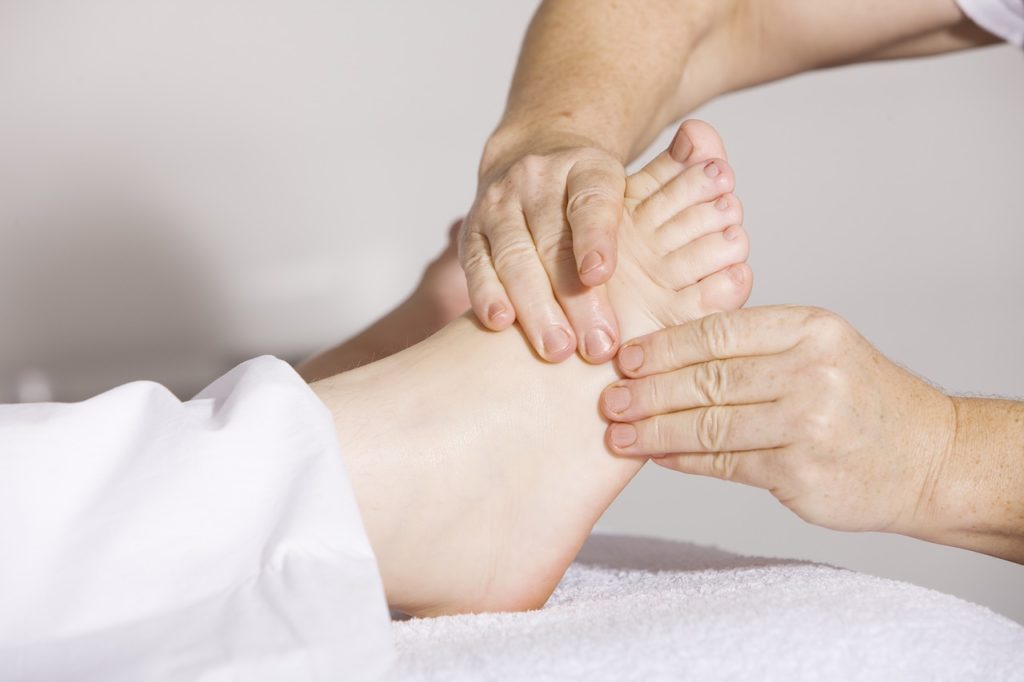A podiatrist is a medical doctor
dedicated to the diagnosis and treatment of the feet, ankles and conditions
affecting the lower extremities. According to Very Well Health,
podiatrists are trained to diagnose and treat various conditions affecting the
connective tissues, nerves, bones, muscles, joints and blood circulation in the
lower extremities. The qualified conditions are as follows according to Dr.
Schlomo Schmuel:
• Foot deformities (conditions such as hammertoes, flat feet, bunions)
• Arthritis (conditions such as gout, osteoarthritis and rheumatoid arthritis)
• Diabetic foot disorders (conditions such as Charcot arthropathy, ulcers and neuropathy)
• Heel and arch pain (conditions such as plantar fasciitis, Achilles tendinitis and heel spurs)
• Skin and nail conditions (conditions such as athlete’s foot, corns, onychomycosis and ingrown nails)
• Foot and ankle injuries (conditions such as strains, sprains and fractures)
• Sports injuries (conditions such as tendon rupture, contusion and stress fracture)
• Morton neuroma
Possible Treatments, Interventions and Tools
The podiatrist may order the application of heat or ice, surgery and non-steroidal anti-inflammatory drugs to treat arthritic illnesses. The treatment of foot deformities, on the other hand, may involve the use of orthotic devices like toe spaces, insoles and surgical procedure. The type of intervention will depend on the severity of the condition. The treatment of diabetic foot disorders usually involves preventive foot care, antibiotics, surgical debridement and corrective footwear. A podiatrist uses a number of tools and techniques to attend to patients.
The most common instruments include: Computed Tomography (CT), Arthrography, Doppler Ultrasound and Electromyography (EMG). The tools used in the diagnosing the disorders of the foot, ankle and lower extremities are critical in making the diagnosis, treatment plan and in disease management and prevention. As part of overall treatment, the doctor can also order flexibility and reflex test, blood tests and bone scans. Several bone scans have been developed to help doctors spot bone fractures and the areas with active, underlying bone transformation.
Becoming a Podiatrist
Students studying to become podiatrist can choose to work as general practitioners. However, there are several sub-specialties to choose from such as forensic podiatry, dermatological podiatry, podopediatrics, neuropodiatry and podiatric oncology among others. To qualify as a doctor of podiatric medicine, one must undertake the necessary training and obtain the required certifications. Students are required to study in an accredited institution.
The classes generally place emphasis on foot, ankle and lower extremity. As the study progresses, students in the medical school usually go on clinical rotations to familiarize themselves with the conditions affecting patients. Upon graduation, the doctors are required to undertake a residency and obtain board certification. A career in podiatry is highly lucrative. According to BLS, the median salary for podiatrists was $129,600 annually in 2018.
What a podiatrist does on a daily basis
A Doctor of Podiatric Medicine (DPM) plays an important role in the entire health care setup. According to the American Association of Colleges of Podiatric Medicine (AACPM), a doctor of podiatric medicine is expected to do the following functions on a typical day:
• Provide patient consultation regarding ways to treat, manage and prevent footwear disorders.
• Provide diagnosis of various foot ailments such as skin and nail disease, tumors, fractures, ulcers and acquired and congenital deformities.
• Design and oversee the placement of plaster casts, orthotics and strappings on deformed feet.
• Craft walking patterns and balance to assist patients to walk or move freely and more comfortably.
• Design well-tuned castings and assisting people with foot immobilization issues as well as sprains, fractures and other listed injuries.
• Apply innovative treatment techniques for patients with heel spurs, bunions, calluses, shortened tendons, ingrown toenails and abscesses among other conditions.
• Make referrals for patients needing the intervention of other physicians for various symptoms and disorders linked to the feet. The conditions include kidney disease, diabetes, heart disease and arthritis.
The Doctor of Podiatric Medicine licensed to work in the USA can be found in different health work stations. The main work areas include private or group medical practice, state public health service, health professional schools, the department of veteran affairs, armed forces, hospitals and extended care Facilities among other places.
About Dr. Schlomo Schmuel:
California is home to many podiatric specialists. Dr. Schlomo Schmuel is a leading podiatrist with over 20 years of experience. He operates out of Los Angeles and serves patients in and around the city. The practice offers a full range of podiatric services, namely: arthritis, bone fractures, foot deformities, diabetic foot disorders and sports injuries.
Dr. Schmuel applies both conservative and aggressive treatment interventions. Patients who visit the office will find a supportive team of experts and an environment that promotes quick recuperation. During his free time, Dr. Schlomo Schmuel enjoys spending time with family and engaging in outdoor sporting activities like swimming and exercising.


